Tuesday Triage #72
- TUESDAY TRIAGE #72 by Vadim Drobinin
- On upcoming holidays
- Things I enjoyed reading
- 1. An odd card trick by Michael Wendl
- 2. The new ten-factor authentication processes for university faculty by @jenner_young
- 3. How to Save a Ski Town by @thats_my_line
- 4. How the Rosetta Stone Yielded Its Secrets by Joan Acocella
- 5. The unbearable fussiness of the smart home by @gigastacey
- 6. The Pigeon Puzzle: How Do They Figure Out Their Impossibly Long Routes Home? by Trevor Popoff
- 7. Ghost Kitchens Are Proving to Be a Messy Business, as Reef Global Shows by @eliotwb
- 8. Software kintsugi by fer
- 9. How to Read a Jellyfish's Mind by Lori Dajose
- 10. The Can That Always Can by @saltyasparagus1
- Things I didn't know last Tuesday
- 1. Podpiwek
- 2. Bootlegging
- 3. Oroshigane
- 4. "Horn OK Please"
- 5. Schlörwagen
- 6. Pop-It invented a former classmate of Anne Frank
- 7. Bialetti was buried in a moka pot
- 8. Canada's maple syrup reserve
- 9. Cranachan
- 10. Hobby
- Book of the week
- Thank you and see you in a week!
TUESDAY TRIAGE #72
by Vadim Drobinin ¶
Your weekly crème de la crème of the Internet is here!
30.11.2021 (read in browser)
-
Intro
Whatever is on my mind this week. -
Things I enjoyed reading
Ten-ish articles I found worth reading. -
Things I didn't know last Tuesday
Ten-ish facts I didn't know when I wrote the previous edition. -
Book of the week
Some thoughts on the latest book I've read.
On upcoming holidays ¶
I don't remember when was the last time I tried sea urchins, and frankly they didn't change much since then.
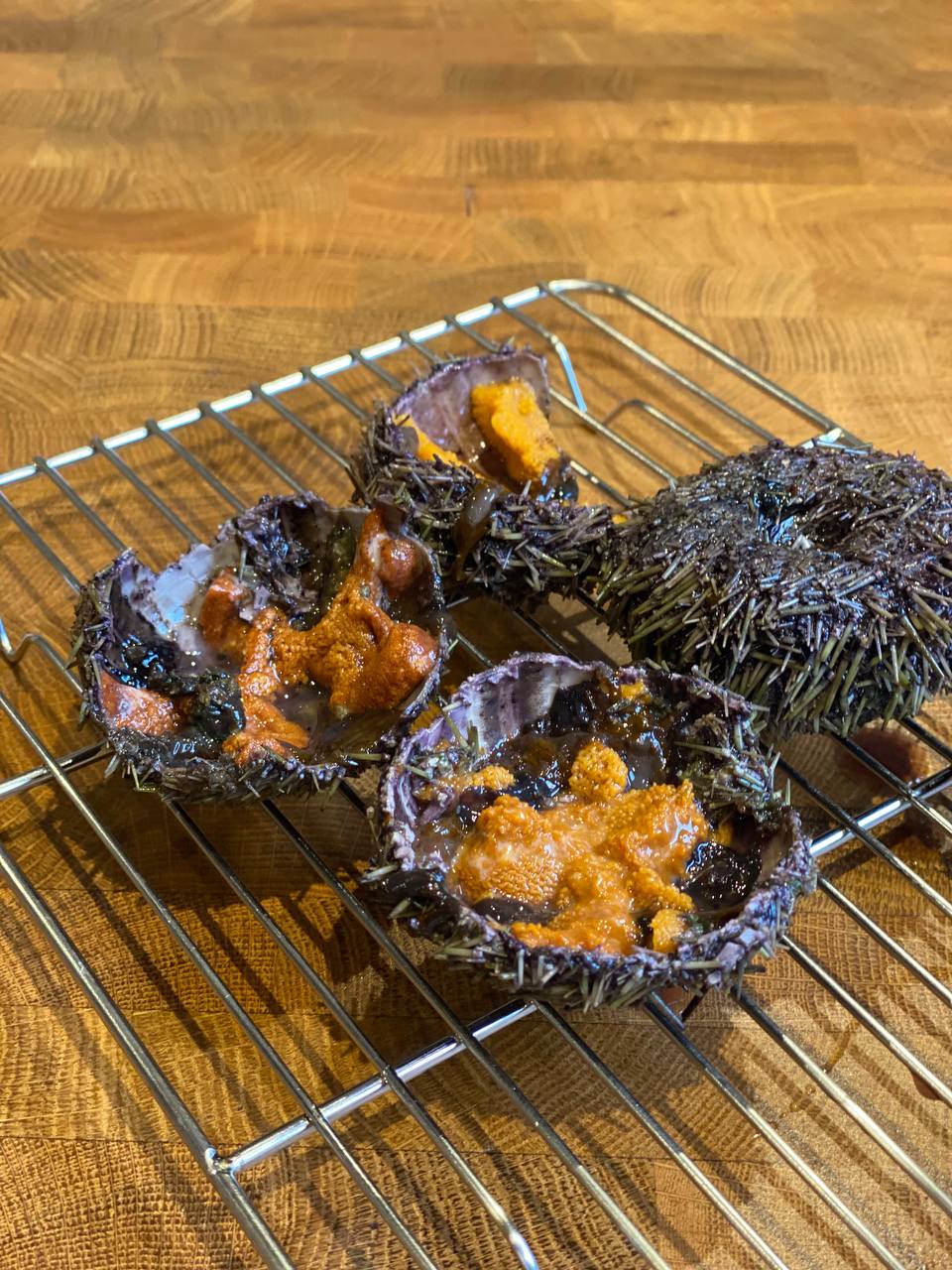
The fishmonger adviced to throw them into scrambled eggs, and we happily obliged (probably I just needed an excuse to make the scrambled eggs), by mixing two thirds of the roe into the eggs, and serving the rest on top.
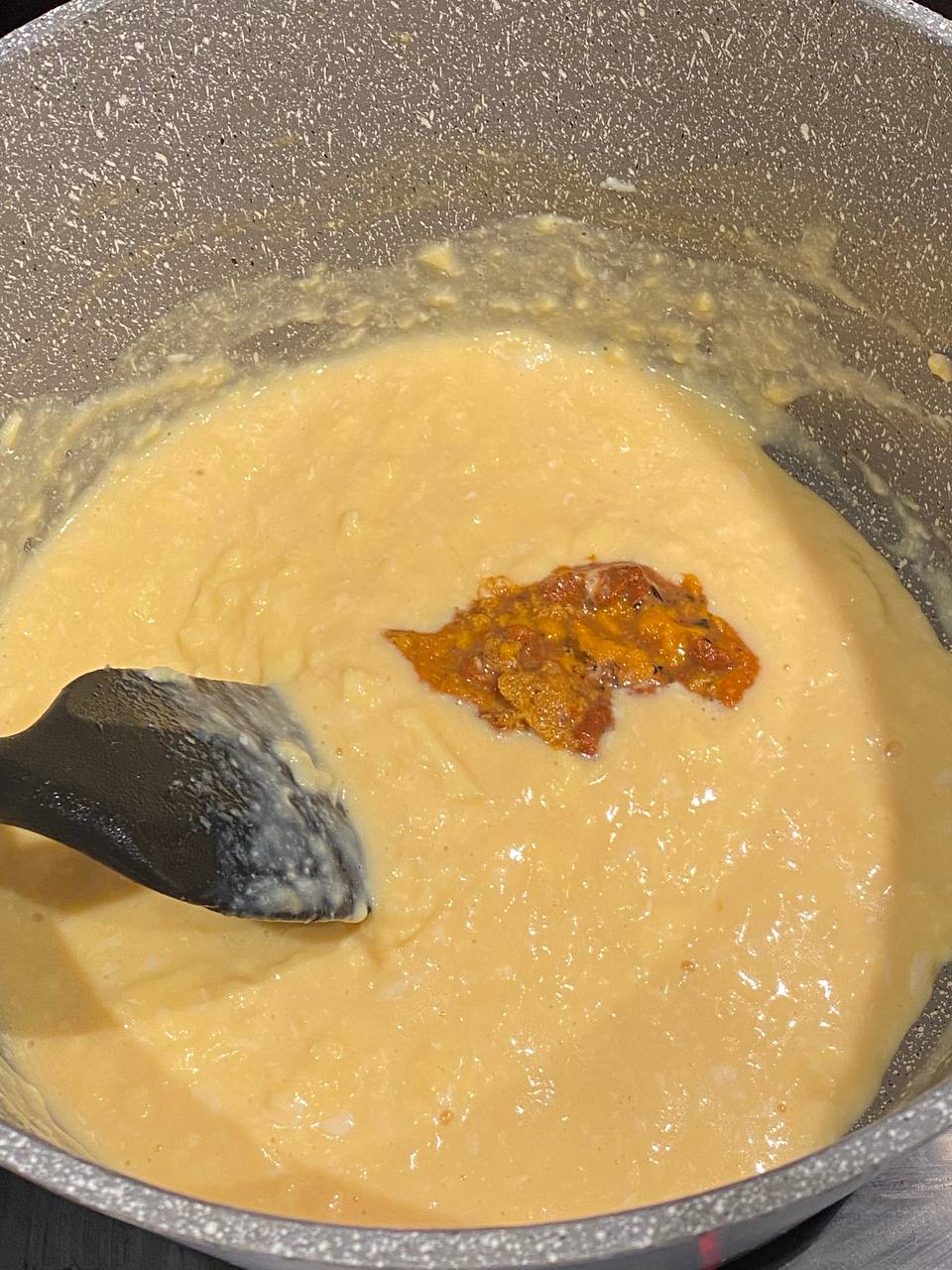
It doesn't taste bad, especially with respect to the amount of butter and white truffle oil I added, but it's not an exciting dish either. I probably wouldn't have it often.
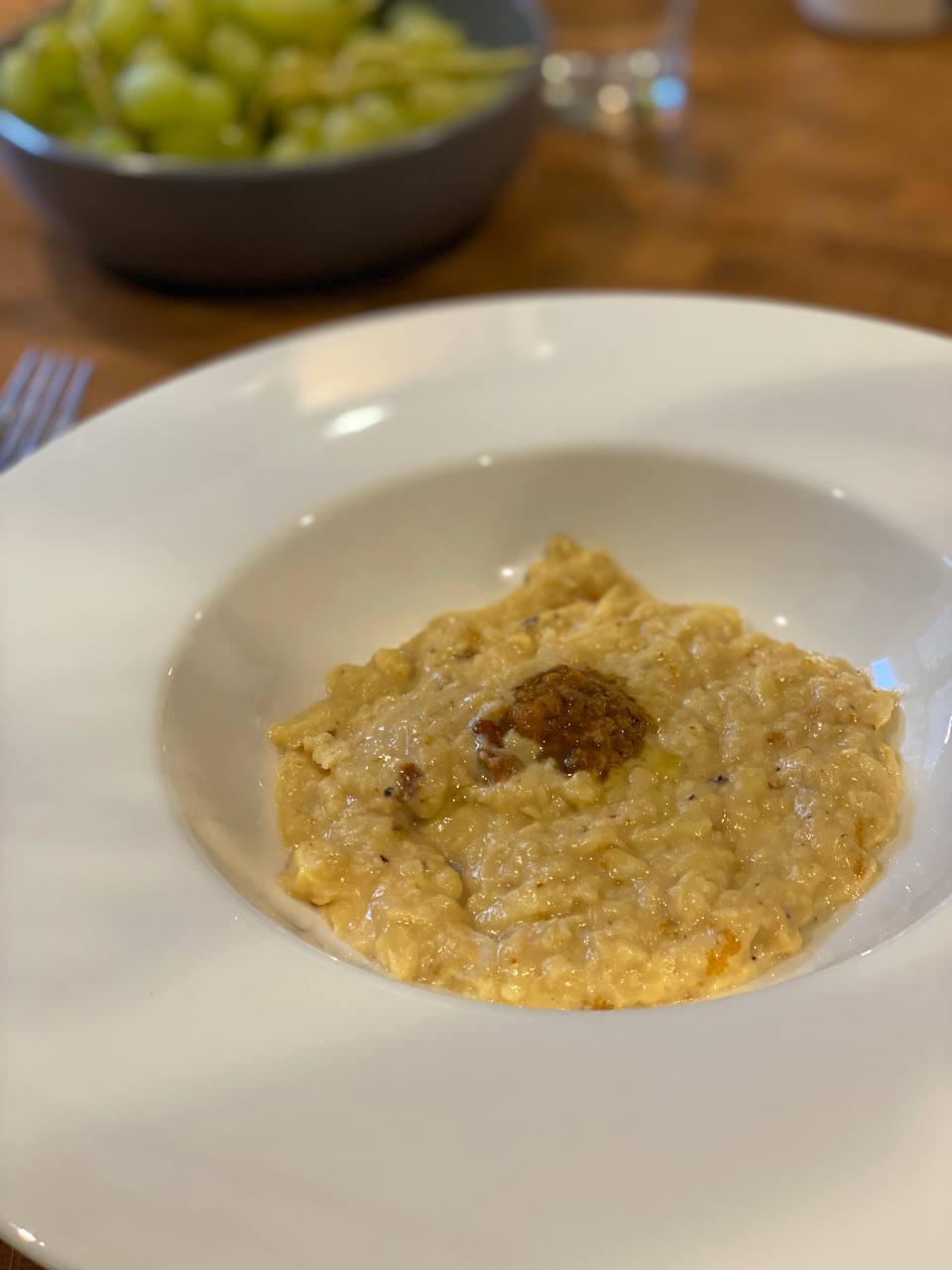
I also had a go at a few beautiful pieces of a French-trimmed rack of lamb, and these ones turned out way better.
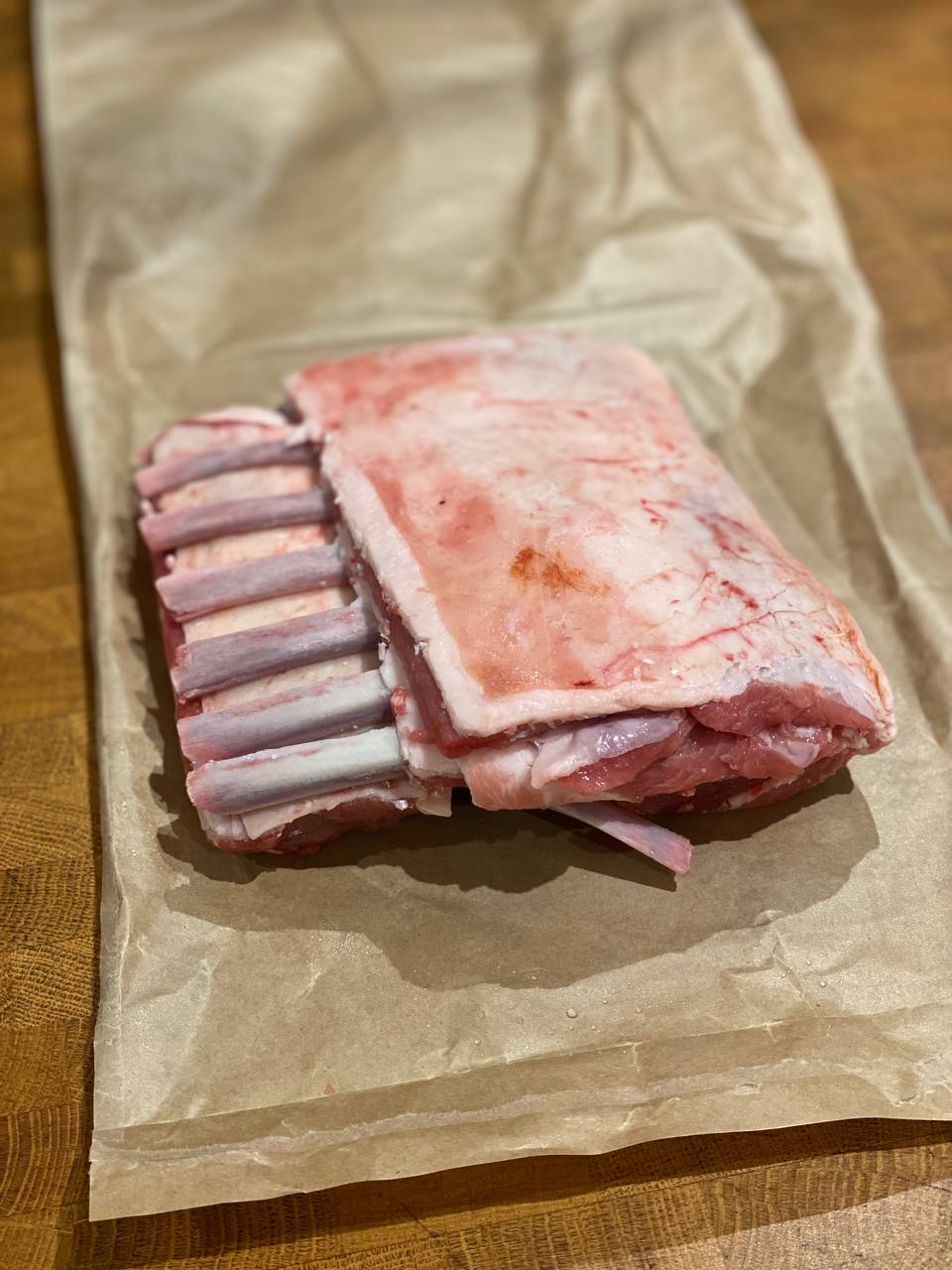
Cooked to medium rare, and initially served with dots of bilberry sauce and kefir-coriander mixture:
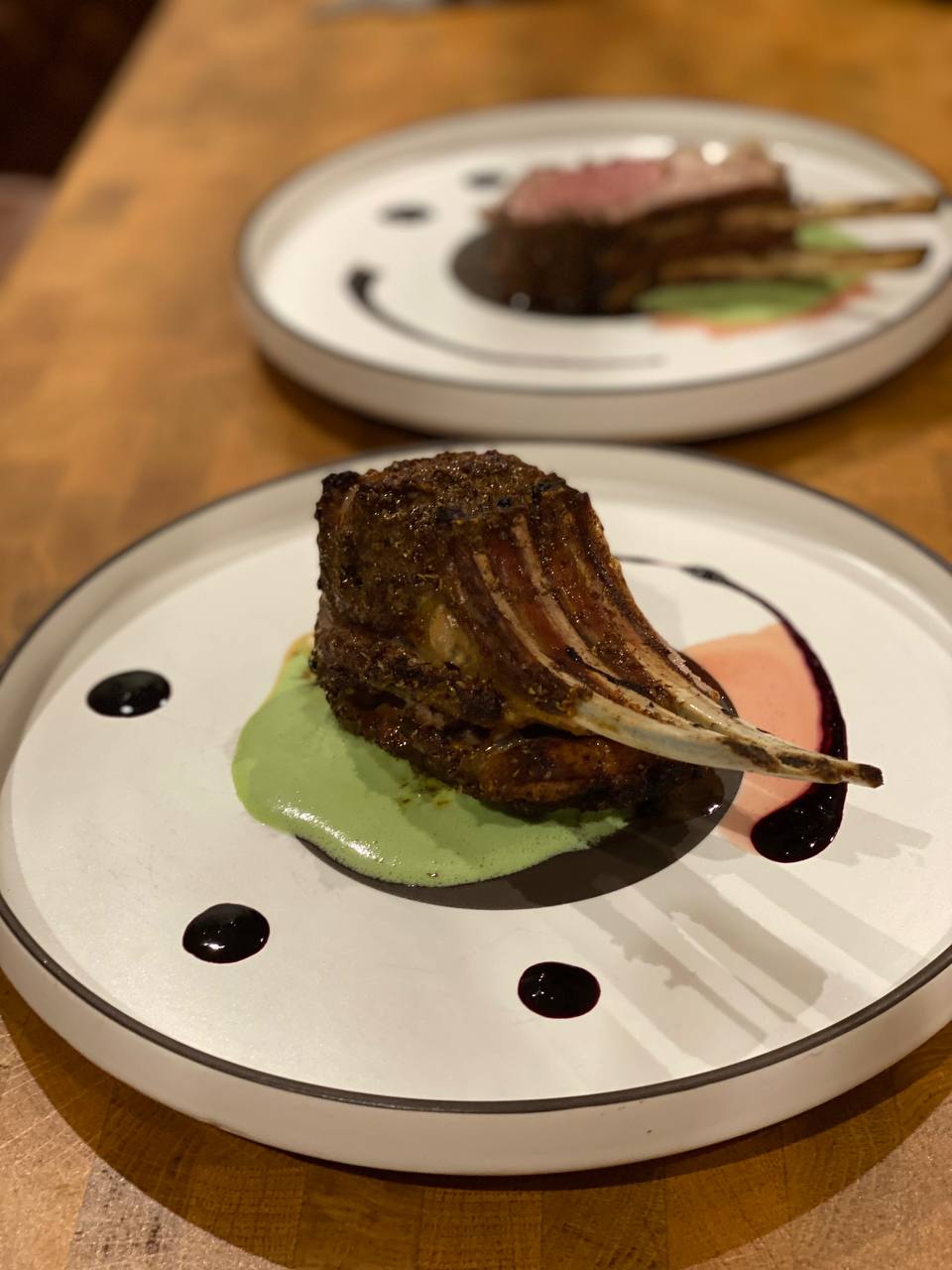
And on the next day I was going to sous vide a smaller rack, but ended up cooking it the same way, in the oven, with a piece of rib eye steak on the side and some mashed peas.
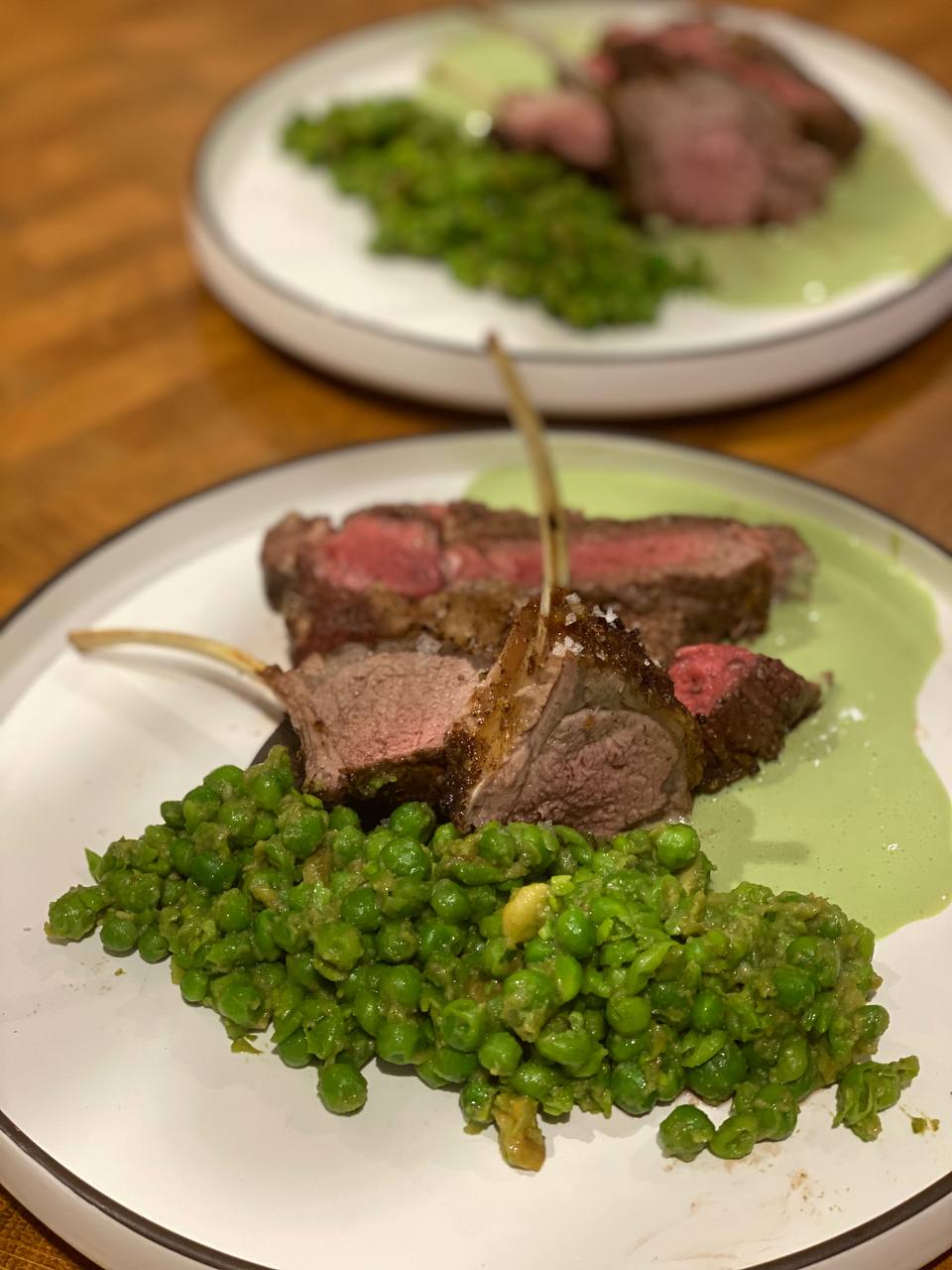
Last but not least, we've stumbled upon a Danish Christmas market and had some odd mulled wine with chopped almonds and raisins, as well as their traditional meatballs, red cabbage, rye bread, and donuts.
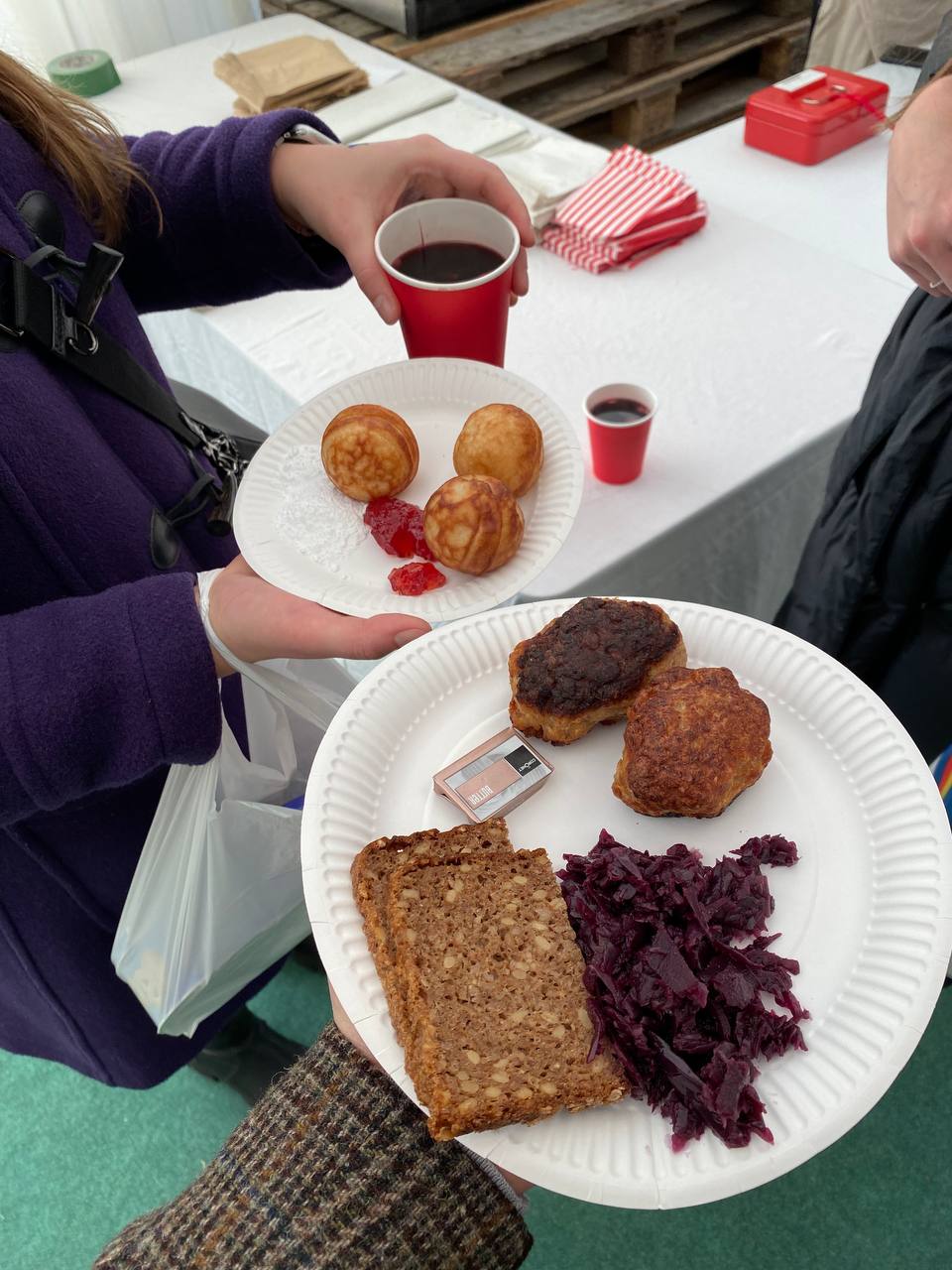
Holidays are coming?
Things I enjoyed reading ¶
1. An odd card trick by Michael Wendl ¶
The best mathematical concepts are the ones you could explain through a real world example, or the ones involving card tricks. This one is the best of both worlds (as an extra bonus it involves wine to make the concept sink through).
Gardner explained the trick in terms of a conservation of mass property, borrowing from the classic riddle of equal containers of water and wine. Namely, if a litre of wine is transferred to the water container, which is then stirred, and a litre of the mixture is subsequently transferred back to the wine container, is there more wine in the water than water in the wine?
To be fair, I thought I know the answer to the question in the quote, and even though in fact I didn't, I still had to re-read a few times to get used to the idea behind it.
So I easily see how it makes a great party trick too.
2. The new ten-factor authentication processes for university faculty by @jenner_young ¶
As you can tell from the title, this is satire, but quite on point. These days we are getting too obsessed with multiple-factored security, and sometimes for a good reason: there are a few services I use, where I wouldn't mind more than one step to authenticate, as scenarios where such services are used shouldn't be as common.
However, most of the time a user of a decent password manager won't need 2FA at all (and if they do, the problem is somewhere else).
Go out to your car and add the digits of your vehicle identification number to the digits of the passcode that your phone generates when you arrive at your car (we use GPS tracking between your phone and the University’s virtual parking pass technology to determine when you’ve arrived at your car).
Sadly the chances are, in the years to come we are more likely to get a 3FA than a single authentication system involving biometrics or something else, mostly because the latter is not reliable enough.
3. How to Save a Ski Town by @thats_my_line ¶
An interesting read about economics and mechanics of ski towns, mostly in the States but I reckon the same would apply to Europe.
Reality check: unless you’re one of the über-wealthy, living in a mountain town has never been the stuff of fairy tales. The limited supply of affordable housing for workers has been a challenge for decades. Ritzy-glitzy Aspen claims the oldest workforce-housing program among North American ski towns. As early as the 1970s, it began slapping deed restrictions—requirements like maximum income levels for buyers or maximum resale values written into the title of a property—onto homes in order to preserve their affordability.
A relatively similar problem applies to other cities revolving around a specific industry, e.g in San Francisco, where FAANG employees drive housing prices to the Moon, shops are closing too as those working there can't afford to live anywhere close.
4. How the Rosetta Stone Yielded Its Secrets by Joan Acocella ¶
I always thought that decrypting the Rosetta Stone was a relatively trivial task, and once scholars got access to the copies of the writings it was just a matter of weeks until they got proper translations.
Apparently that's not the case at all, and decades passed until someone managed to understand how the language is constructed.
As Champollion wrote, a passage in hieroglyphs was a script “at the same time figurative, symbolic and phonetic, in one and the same text, in one and the same sentence, and, if I may put it, in one and the same word.” Going further, Champollion showed that the system also used rebuses, a kind of linguistic pun simultaneously pictorial and phonetic. An example in English is “👁CU” for “I see you.” Dolnick asks us to imagine writing “Winston Churchill” by drawing a pack of cigarettes followed by a picture of a church, then a picture of a hill.
It's also quite funny how they were afraid to attempt to translate the stone as it was somewhat similar to disturbing a Pyramid.
5. The unbearable fussiness of the smart home by @gigastacey ¶
I do relate a lot to this post, as recently I've upgraded our heating system to a new generation of valves, meant to work remotely, and all I do now is to constantly reset and reconnect them to a HomeKit bridge and occasionally manually set up the temperature.
It's getting out of hand so much I am thinking of just returning them back.
My final example of fussy devices addresses the challenges of making a device work within an ecosystem. I have two WeMo outlets powering lights over my plants that are tied into my Google Home ecosystem. They’re scheduled to turn on at 8 a.m. and off at 8 p.m. in the Google Home routines setting as well as grouped to turn on or off when I tell Google to “Turn the plants on” or “Turn the plants off.” Sometimes this works. Sometimes it doesn’t. And sometimes it will tell me it doesn’t work, via notification or voice, when in fact it’s working just fine.
Smart homes are beautiful when they work, but it's also a disaster when they don't.
(PSA: don't rely on HomeKit to turn off your daily alarm when you are away; chances to come home to the music that's been playing for seven days in a row are high indeed)
6. The Pigeon Puzzle: How Do They Figure Out Their Impossibly Long Routes Home? by Trevor Popoff ¶
For those curious how pigeons find their way home, speculate no more and check out the article.
Even the way it's tested sounds like fun:
Pigeon racing can be a brutal sport. Beyond the sheer length of the races, incidents of doping, mass deaths, and illegal gambling have detracted from what should be an exhibition of an animal’s incredible skill. While the Canadian racing scene is lower profile than its cutthroat counterparts in the UK, South Africa, and the United States, the challenge for the birds remains the same.
Now I wonder how it works in the UK, where hunting for pigeons is quite common (albeit not in cities).
7. Ghost Kitchens Are Proving to Be a Messy Business, as Reef Global Shows by @eliotwb ¶
Not the first time I read about ghost kitchens, and pretty sure it won't be the last one. What caught my attention here is the cost of maintaining one:
Real estate has been another problem: Despite Reef’s parking roots, Reef found it wasn’t able to put trailers on many of its lots, as some had enclosed garages, where propane tanks and utility hookups aren’t allowed. Others were owned by landlords who didn’t want food trucks, former employees said. As a result, Reef rents lots from other parking owners for more than 70% of its kitchens, current and former executives said.
One would think that renting out a proper kitchen is way more expensive pretty much anywhere, and it sure is, but with the price come benefits of proper cooking setups and safity mechanics. It's less of a problem for most fast food, where you just heating up ingredients and then mix them together, but there is probably no way to evolve in the current setup.
8. Software kintsugi by fer ¶
I've learnt about kintsugi only recently and it is a beautiful concept. Even more beautiful is its application to software engineering.
It’s recognizing and acknowledging this fragility (either by studying the system or by watching it fail) and mitigating these behaviors what I’d call performing software kintsugi. The ability to identify and learn to love these mitigations in the architecture of the system is appreciating software kintsugi. Oftentimes these mitigations might look like strange architectural decisions, or high level code that isn’t all that obvious when you first look at it, and its meaning only becomes clear when you try to clean it and make it proper.
An important note is that kintsugi is not about bugs, as the latter means something was broken from the very beginning. Let it sink.
9. How to Read a Jellyfish's Mind by Lori Dajose ¶
If you fancy a proper DIY project for the weekend, I got you covered, but it involves sourcing an alive jellyfish and reading through a few research papers.
By examining the glowing chain reactions occurring in the animals' neurons as they ate, the team determined that a subnetwork of neurons that produces a particular neuropeptide (a molecule produced by neurons) is responsible for the spatially localized inward folding of the body. Additionally, though the network of jellyfish neurons originally seemed diffuse and unstructured, the researchers found a surprising degree of organization that only became visible with their fluorescent system.
The rest of the process is quite complex too, but getting an alive jellyfish still might be the most complex step.
10. The Can That Always Can by @saltyasparagus1 ¶
A cool timeline of the WD-40's history, from its invention to conquering the market.
WD-40 also tickles the olfactory senses a bit. A cursory internet search inquiring why it smells weird reveals it may be scented with Vanillin, accounting for the slightly sweet odor. Perhaps the strangest thing about it, however, is that while it was invented in California, it is actually prohibited from being sold there in its original formulation due to a California Air Resources Board ruling from 2013 requiring all aerosols to contain 25 percent or less of volatile organic compounds (VOCs). That’s why some cans of WD-40 in the other 49 states are labeled with a “not for sale in California” warning.
Also includes lots of wacky facts and trivia as you could notice.
Things I didn't know last Tuesday ¶
1. Podpiwek ¶
I learnt about this drink while talking about Russian (Soviet?) kvass – a bread-based drink that gets naturally carbonated and years back was sold out of large yellow tanks on wheels all over the city.
Podpiwek is a Polish and Lithuanian non-alcoholic beverage (even though it contains a small amount of alcohol, about 0.5%). It is usually made from grain coffee, hops, yeast, water and sugar, which undergo fermentation. Often created as a byproduct during beer production, it was a common drink of women and children.

The inclusion of coffee in the recipe also reminds me about Kofola, a Czech Republic's coffee-based Cola alternative, but that's a different story.
2. Bootlegging ¶
I should've guessed but I didn't and you probably didn't either: the word "bottlegging" (illegal production and distribution of booze) comes from hiding flasks in boots.
They [hip flasks] were also carried by ladies tucked in garters or by men in boots – thus the word “bootlegging”.
How do I know? I was trying to understand how to keep my flask on me without putting it into a backpack. This how I also learnt why they are called hip flasks...
3. Oroshigane ¶
Just so you know too, the only acceptable way to grate wasabi is to use a dedicated grater made out of shark skin:
These graters are still considered the best and are used by professional chefs. For preparing wasabi and yamaimo, graters with the surface made from shark skin were exclusively used. These have an even finer grating surface than a metal one; much closer to a sanding paper.

What'd happen if you use a steel grater? No one knows.
4. "Horn OK Please" ¶
I don't remember seeing these signs in India or Bali, but seems like it's quite widespread these days:

Trucks, in particular, are often not even equipped with side mirrors in the first place. As a result, the backs of trucks may be painted to urge drivers to use their horn as a signal to the truck driver when they are overtaking.
The article is worth reading as it gives a few more theories on the phrase's origins.
5. Schlörwagen ¶
Just look at this beauty:

The Schlörwagen (nicknamed “Göttinger Egg” or “Pillbug”) was a prototype aerodynamic rear-engine passenger vehicle developed by Karl Schlör (1911–1997) and presented to the public at the 1939 Berlin Auto Show. Only one prototype was built.
Sadly it was quite impractical and even the prototype didn't survive.
6. Pop-It invented a former classmate of Anne Frank ¶
I somehow completely ignored the Internet trend around these... toys but this is an interesting fact:
The Pop It was originally invented in 1975 by Theo and Ora Coster of Theora Design: a married Israeli couple who had invented many games including Guess Who? and Zingo!. Theo was a former classmate of Anne Frank.

7. Bialetti was buried in a moka pot ¶
Here is what happens when your product appears in the kitchens of 90% of all Italians:
His father may have invented the beloved Moka stovetop espresso maker, but Renato Bialetti made it a symbol of Italian style worldwide.
Bialetti died last week at age 93. His three children honored him Tuesday by placing his ashes in a large replica of the coffee pot.
The unusual urn even featured the famous "Omino con i baffi" (meaning "The little man with mustache" in Italian) pictogram printed on every pot.
And as they say, a picture is worth a thousand words:

8. Canada's maple syrup reserve ¶
As countries tend to have reserves of something very valuable, I am not sure if I should be that surprised at the fact that Canada has a maple syrup reserve.
The Canadian group Quebec Maple Syrup Producers recently announced it was releasing about 50 million pounds of its strategic maple syrup reserves — about half of the total stockpile.
Sounds like a tough year for maple syrup fans.
9. Cranachan ¶
A perfect breakfast exists in Scotland: think cream with whiskey.
Cranachan is a traditional Scottish dessert. It was originally a celebration of harvest, made following the raspberry harvest in June. The dessert of cream and fresh seasonal raspberries is bolstered by Scottish oats and whisky.
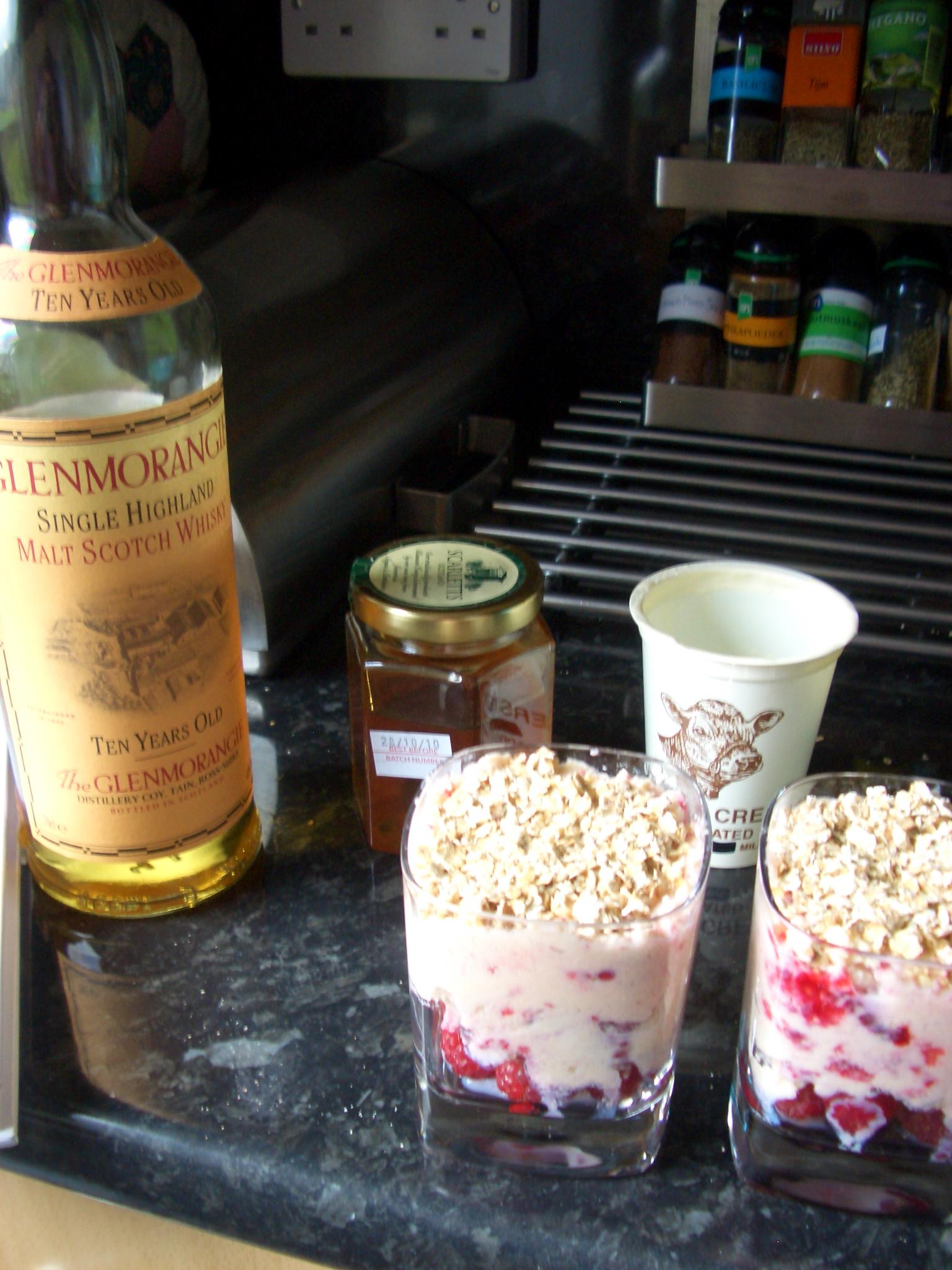
Given the fresh raspberries and oats, you can easily cross off three out of your five a day.
10. Hobby ¶
Randomly came across this etymology of the word "hobby": apparently it comes horses and horse-like toys.
[...] probably originally a proper name for a horse (compare dobbin), a diminutive of Robert or Robin. Old French hobi, hobin, once considered possible sources, now are held to be borrowings from English.
The modern sense of "a favorite pursuit, object, or topic" is from 1816, a shortening of hobbyhorse (q.v.) in this sense, which is attested from 1670s. Earlier it meant "a wooden or wickerwork figure of a horse," as a child's toy or a costume in the morris-dance, the connecting notion being "activity that doesn't go anywhere."
The connecting notion sounds quite optimistic as well and could easily apply to all my side projects.
Book of the week ¶
Every week I skim through my notes to remember what I've read the most, and usually it's something about cooking.
It does indeed affect my day to day life: in the past I used to compare the food I eat with the food I ate before, but these days I mostly compare it to the complex dishes invented by the best chefs lived, and that changes a lot.
I still enjoy eating whatever people around cook – and I do enjoy it a lot – but at the same time I see unlimited rooms for improvements and tend to talk about them if asked.
Maybe that's not the smartest of my ideas.
Bo Bech, a famous Danish chef, has a very similar approach and lives by the rule of "to cook well one must learn how to eat well", which I fully second. His second book, In my blood, is what got me inspired this week:
The day begins at night. The guests have left, we have washed down the kitchen, and now we sit down in the restaurant - or the courtyard, if the weather allows for it. We are a little tired and a little satiated by it all. We laugh a bit and talk about what happened over the course of the evening. We clear the air if someone's toes have been stepped on, if someone has been too harsh, or if someone ·needed to be more present during dinner service. It is a soft recap of the evening, without being systematic. While this is going on, we also put in orders for deliveries and go through what is needed for the following day. Some people go home and kiss their loved one, others go out on the town. And seven or eight hours later we meet again.
Bo approaches a shift as a battle – a battle you could win or loose, or even die in the midst of it – and deals with it accordingly. A mise en place is when you check and prepare your ammunition, a first order signals the start of the action, and while you are fighting guests should experience a show instead.
The book itself is very sophisticated: think The Art of War by Sun Tzu, not Cooking with Jamie by Jamie Oliver.
And yet it's a cookbook: a hundred and something pages in you get recipes, and while they are about simple ingredients, they are incredibly complex to make (and yet must taste delicious). One example that got me surprised is their celeriac, served with condensed buttermilk (buttermilk boiled, separated, strained, and reduced into almost nothing, and then blended with browned butter).
This dish is only two ingredients – and the sauce is five times more expensive and more complex than the main part, but guests don't have to know that.
And that's how you know the dish is about the flavour.
Thank you and see you in a week! ¶
If you have any questions, or want to suggest a link for the next newsletter, please drop me a message on Twitter or reply to this email.
Cheers! 🍸